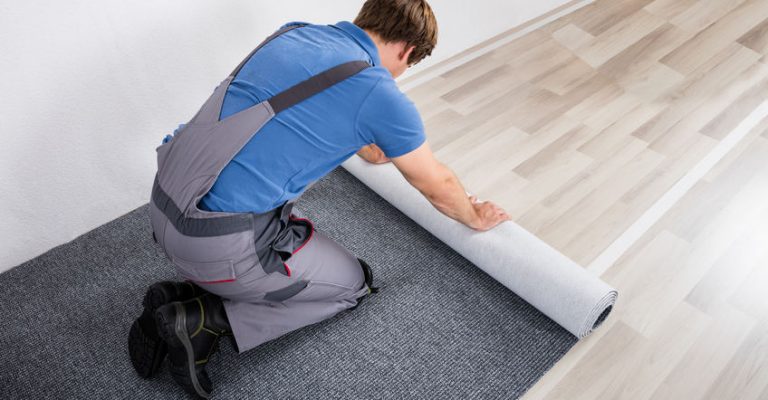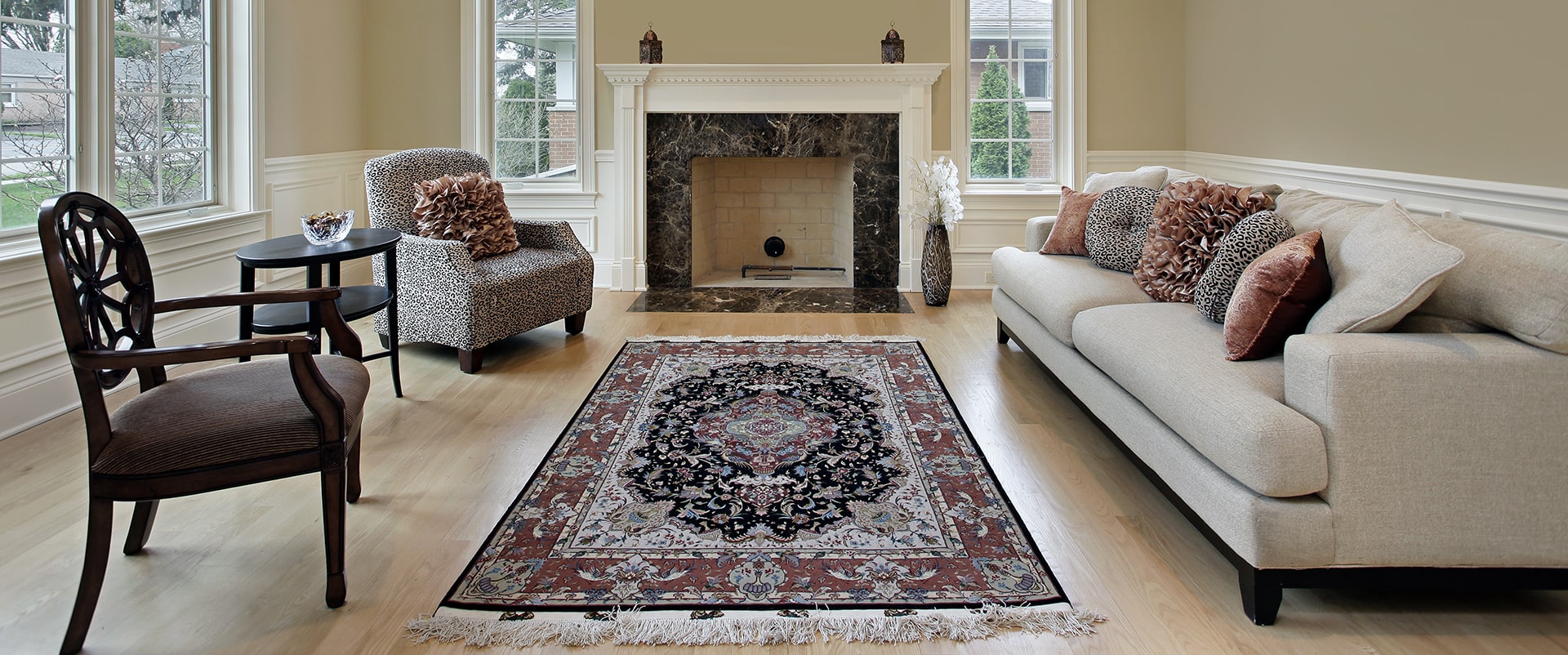How to Transition from Wood Flooring to Carpet Flooring

When installing carpeting in a room that already has wood flooring, there’s no need to tear up the existing floor down to the subfloor and start from scratch. No, carpeting installs quite nicely over existing wood flooring. Here’s how to make the transition from the wood to the carpet as seamless as possible.
The Objective: Don’t Trip
Yes, you could certainly step up and over the edge of the carpet. However, in the event you don’t lift your foot quite high enough, the last thing you want is to tumble head-first to the floor—no matter how plush and soft it is. Therefore, you’re going to need to make sure the carpet is firmly secured to the floor. This way, if you brush the edge of the carpeting, your foot will continue to slide instead of getting snagged and sending you flying.
Installing the Tack Strip
The tack strip is what is going to keep the carpet firmly planted on the floor. They come with everything needed to install them. There are essentially two types, those for wood floors, and those for concrete floors. Although the concrete ones may work on your wood floors, you don’t want to accidentally void a retailer’s warranty or return policy by using the wrong type.
Fold back the carpeting and backing pad. Then nail the tack strip down about half an inch from the edge of the carpet. The tack strip will have the spaces for the nails already in it, and it may have arrows that show the direction it is supposed to face in relation to the carpet edge.
Cutting the Carpet
You will likely have two end points for your carpet, where it butts into the walls on the sides or where it hits up against the sides of the door opening. It is important that these two endpoints are connected. Even if that results in an installation that isn’t perfectly parallel to the wall the juncture is facing, making it straight will preserve the neat look of the installation. Cut a nice, straight line. If you’re installing at the edge of a door opening, put the carpet up against the opening and cut it in that position. Do not just measure the opening and apply that measurement to the carpet. This is far less accurate than cutting the carpet in place. Cut the backing as well. Be sure to cut it slightly back from the edge of the carpet in order to give the transition a lower profile.
Installing the Carpet on the Tack Strips
Use a knee-kicker to nudge the carpet into place, stretching it just a little. Fold the edge of the carpet back to give it a clean transition. Immediately place it on the tack strips. You can then use a construction stapler with narrow staples driven between the fibers of the carpet to firmly attach it to the tack strip. This way, the carpet has both the tack strip and the staples keeping it in place.
Once you have done this, there is no need for a transition piece, or a reducer. However, if you’re unsure about the integrity of the transition, you can skip the step where you fold back the carpet and just put a reducer at the edge




